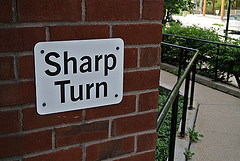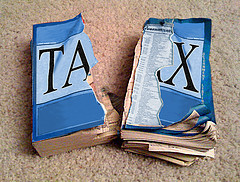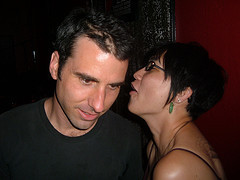Stavros Halvatzis's Blog, page 55
October 13, 2013
Story Checklist

Story Checklist:
In Writing Screenplays that Sell , Michael Hauge offers us advise from a structural perspective that echoes that of other screenwriting gurus such as Field, Volgner, McKee, to name but three. Much of this advise can be of benefit to novelists such as myself, seeking to tighten and make supple, the overall shape of their stories. This post provides a checklist, taken from Hauge’s book, which should prove useful to screenwriters and novelists alike.Story Structure
Structure is nothing other than a series of events that form a relationship to one another relative to their position in the story. Correct structure emerges when the right thing occurs at the right time to solicit maximum emotion and a sense of verisimilitude from the reader or audience.
A well structured story has three acts, or sections, or to state this more simply, it has a beginning, middle and end. The beginning establishes the setting, situation, the characters and their motivation, and the chief goal of the protagonist.
The middle part of the story, also known as the complication, provides, expands and complicates the obstacles to achieving that goal.
The end section resolves the question as to whether or not the goal can be achieved, most typically, through mounting tension and pace manifested through crisis, climax and resolution.
Having established that your story needs to have a properly structured beginning, middle and end, ask and answer the following questions:
Do your scenes do one or more of the following?
1. Contribute to or impede the protagonist’s pursuit of the goal?
2. Accelerate the pace of the story?
3. Build conflict?
4. Contribute to the overall rhythm of the story—fast scenes ought to be followed or preceded by slower ones and tense ones with lighter/humorous ones?
5. Create reader/audience anticipation?
6. Surprise the reader/audience?
7. Foreshadow important events?
8. Create curiosity?
9. Contribute to character development?
10. Put or prepare to put the protagonist in jeopardy?
If the answer to these questions is mostly “yes”, then the chances are that you’re on your way to writing a successful story—at least, from a structural perspective.
Summary
Structure defines the relationship of one scene or event to another. Proper structure allows for such a relationship to heighten the story’s suspense, verisimilitude, and impact.
Invitation
If you enjoyed this post, or have a suggestion for a future one, kindly leave a comment and let’s get chatting. You may subscribe to this blog by clicking on the “subscribe” or “profile” link on the right-hand side of this article. I post new material every Monday.
October 6, 2013
Story Plots

Story Plots:
Much has been written about the total number of plots out there—ranging from three to twenty, or more. Although I think that this sort of discussion is moot, if not outright silly, the actual plots that it throws up, isn’t:1. The Pursuit: In this type of plot the chase defines the story’s structure and character relationships. The chaser(s) must have a reasonable chance of catching the chased, for this to work properly, and for tension to be maintained. (The Fugitive).
2. The Rescue: The protagonist has to rescue the victim from the antagonist by pursuing her to the ends of the earth if needs be. (Taken).
3. The Adventure: The Hero travels to strange and exotic places and experiences equally strange and exotic events. The Hero typically goes off in search of treasure, but ends up gaining true love instead/as well. (Raiders of the Lost Arc).
4. The Quest: The protagonist undertakes a journey to acquire or protect something of exceeding value. The story usually charts the character’s vicissitudes and growth during this journey. (Lord of the Rings).
5. The Temptation: This type of plot explores the concept of morality and exposes the effect of giving in to temptation. It typically involves the Hero resisting temptation, giving in to temptation, suffering the consequences of temptation, and finally achieving some sort of insight, growth, and, possibly, redemption through a sacrificial act. (Dangerous Liaisons).
6. The Revenge: The protagonist assumes the moral high ground by invoking an-eye-for-an-eye vengeance for a great wrong perpetrated by the antagonist.(The Count of Monte Christo).
7. The Rival: The Hero and antagonist are locked together in a struggle to achieve dominance over a situation or person. (Face Off).
8. The Escape: The protagonist, usually innocent of the crime or accusation, is imprisoned against his will. The plot charts the protagonist’s journey from capture, thwarted attempts to escape, and the final get-away. (The Shawshank Redemption).
9. The Underdog: Here the protagonist is seriously under gunned in his life-and-death struggle with the antagonist. The antagonist need not be a person, but a force of nature which threatens the existence of the protagonist. (Volcano, Rocky).
10. The Heist: This involves the identification and setting-up of a target to rob, the execution, the unravelling, and the resolution. (Ocean’s Eleven).
11. The Riddle: This story type sets up a difficult question, mystery, or puzzle as the driving force behind the story and invites the reader or audience to find the solution before the Hero does. Solving the puzzle requires that the protagonist use his wits and ingenuity to overcome physical as well as mental obstacles, involving self-sacrifice and the threat of death. (Sherlock Holmes).
What plot type do you think your story falls under? Is it, perhaps, a mix of two, or more? Answering these questions will help guide the development of your characters and action.
Summary
Plot types help to fashion the structure of your story by setting up certain generic expectations. This post suggests eleven such types.
Invitation
If you enjoyed this post, or have a suggestion for a future one, kindly leave a comment and let’s get chatting. You may subscribe to this blog by clicking on the “subscribe” or “profile” link on the right-hand side of this article. I post new material every Monday.
September 29, 2013
How to Use Dramatic Irony in your Story

Not in the Know
Dramatic irony typically occurs when the reader, audience, and perhaps, some, but not all of the characters in a story are privy to important information that the protagonist is unaware of, or presumes an opposite situation to be true.Structuring Dramatic Irony
In order to create dramatic Irony in your story, do the following:
1. Show the reader or audience the kind of misunderstanding or deception that is being perpetrated. This could be intended or unintended.
2. Place the protagonist in that situation without revealing to her the information necessary for her to know she is being deceived.
3. Play the scene out, step by step, allowing the reader or audience to observe the protagonist suffering the consequences of events and actions, whilst thinking the situation to be precisely the opposite of what is actually happening.
In Moulin Rouge, Satin (Nichole Kidman) pretends she doesn’t love Christian (Ewan McGregor) so that he will leave her and so save his life—only he can’t know the real reason, for this to work. She pretends that she wants to stay with the Maharaja at Moulin Rouge. In other words, she has to hurt Christian in order to save him, precisely because she loves him, by pretending she doesn’t. The dramatic irony in the scene in which she reveals this to him is tragic and heart-rendering.
Satin: I can never see you again.
Christian: What are you talking about? What about last night?
Satin: I don’t expect you to understand. You don’t belong here. But this is my home: Moulin Rouge.
Christian stares at Satin in horror. Satin smiles weakly; hurries to the door.
Christian: What’s going on? Satin! There’s something wrong…
Satin battles to control her breathing.
Christian: You’re sick. Tell me the truth!
Satin gathers her last remaining strength and turns to him with cold lifeless eyes.
Satin: The truth…the truth is, I am the Hindi Courtesan Christian, and I choose the Maharaja. That’s how the story ends.
And with that, she turns and goes.
It is important to understand that in this superlative example of dramatic irony, we are made privy not only to Christian’s pain, but Satin’s as well, through our understanding that her actions are a sacrificial show of love. We get meaning and emotion from both sides, and this heightens the power of the scene.
Summary
Dramatic irony typically occurs when the audience, and one or more party is aware of the true nature of a situation while the protagonist presumes the opposite to be true. The effect on the reader and audience is one of heightened emotion.
Invitation
If you enjoyed this post, or have a suggestion for a future one, kindly leave a comment and let’s get chatting. You may subscribe to this blog by clicking on the “subscribe” or “profile” link on the right-hand side of this article. I post new material every Monday.
September 22, 2013
Turning Points

Turning Point
I have talked, more than once, about what constitutes a turning point. This post takes another look at this all important topic, adding what, I hope, is fresh insight.A turning point, we are reminded, is that moment in the story, when something big happens to spin it around in a new and unexpected direction. I’ve mentioned that this takes the form of new information granted to the protagonist and audience.
I’ve also intimated that an action-orientated turn ought to be supported by a strong inner motivation and goal. I’ve further suggested that such motivation is nested in the inner journey—so, if we draw a line to represent the outer journey as the physical series of actions and events, the inner journey is the line that rides below it in parallel, with the various turning points seen as spiking intersections between the two.
But precisely what form should this new information take? Specifically, should it come from the outer journey–such as the news that a solar flare seems set to destroy the earth, in the filmKnowing, then pull the inner journey closer to it, or should it spring from he inner journey directly, as in Oblivion, when the Tom Cruise character realises that the flashes of memory that have been plaguing him are, in fact, actual memories of his wife (albeit, as we’ll later find out, through the medium of resonance, which unites his clones).
Does it really matter, which comes first, you may well ask, since the outer and inner journeys meet at the turning points anyway? My personal view is that it does. A turning point that comes from the inner journey then lifts to touch the outer journey, contains more of an “Aha” moment. It draws our attention to the character’s background and motivation and makes us care more for her predicament. It makes the action that springs from it more meaningfully, right off the bat, and invites empathy and verisimilitude in our apprehension her response.
Of course, that is not to say that action can’t initiate the turning point then drop down to the inner journey and fuse with it effectively. Action films such as Die Hard and the crop of superhero films such as Batman and Superman. often take that route. Still, letting the turning point spring from the inner journey heightens the authenticity of the protagonist’s actions and may be the more appropriate place to mine for turning points in drama-ordinated genres.
Summary
A turning point that springs directly from the inner journey increases character authenticity and verisimilitude and may be the more appropriate place to mine when writing within drama-orientated genres.
September 15, 2013
Review or Bust

Review or Bust
This post, requested by one of this blog’s subscribers, fellow author Joy Sikorski, deals with the task of finding reviewers for one’s books on Amazon—an often daunting task. Readers often don’t realise the crucial importance of reviews to the life of a book. Without a sufficient number of these, books languish and die.One approach aimed at alleviating the problem is to ask readers for reviews, either at the beginning, or end of your book, and provide a link to the specific spot on Amazon. This can work, but it requires that a sufficient number of people read your work first. When your book first appears, however, especially if you are a new author, it tends to get lost amongst the millions of others on Amazon. It’s easy to miss. Few readers, few reviews. It’s catch-22 all over again.
Joining some of the various book clubs and establishing a dedicated Facebook of your novel may, and, does, help. Yet, there are many who promise reviews on such pages, but never get around to writing them—though we live in hope! One does occasionally strike it lucky through such channels, though.
Yet another method is to run a blog such as this. If you are offering a free service that people find helpful, some conscientious souls may be inclined to reward you by buying your books and offering honest but fair reviews of them. This method, for example, has yielded some success for me.
One surer way is to join a professional site such as the Author’s Marketing Club.
http://www.authormarketingclub.com/
I have subscribed to this site and have found it extremely helpful in a variety of ways. The site provides loads information and insight on how best to market your book. It develops and offers many tools that make marketing your novel(s) easier. The site offers a specific tool (reviewer-grabber tool) that identifies reviewers on Amazon in your genre and lists their email addresses for you. It even offers a template letter showing the ideal way to word your request. It is then up to you to email these reviewers, offer to send them your book as a gift, and request they review it. Because these reviewers have an established track record (which you can check with the tool), the chances are that you will receive a number of positive responses through this method. You do have to be a paid-up member of the club to benefit from this, though.
I’ve have discovered that the benefits offered through this club, more than make up for the joining fee.
These then are some of the methods that independent authors, such as myself, use to encourage reviews of their books. Taken together, they form a core strategy, which yields results.
Summary
Reviews are the lifeblood of your book on Amazon. Few reviews = few sales. This post offers methods to address the situation.
Invitation
If you enjoyed this post, or have a suggestion for a future one, kindly leave a comment and let’s get chatting. You may subscribe to this blog by clicking on the “subscribe” or “profile” link on the right-hand side of this article. I post new material every Monday.
September 7, 2013
Backstory Revisited

Backstory Revisited
One of the potential problems of exposition/backstory in a novel or movie is that it may slow the action down to a crawl, show its hand, and ultimately bore us. Yet, supplying information that is essential to the plot’s progression is unavoidable. A novel or movie can’t painstakingly trace every single prior event. It has to jump around, intrigue us and then surprise us through the revelation of some connection to a past occurrence, action, or character trait. Without sufficient grounding, however, none of the above is achievable.In deciding what information to spell out through backstory, it may help to ask yourself the following questions:
1. What is the motivation of the characters that we need to know in order to give their actions verisimilitude?
2. What is the history of the story problem?
3. What insights into the characters psychological makeup are necessary to support the authenticity of the ongoing action?
4. What evidence must you show to suggest that the characters have the resources and potential to solve the story problem?
5. What past information is necessary to give the story realism?
One of the best ways to blend backstory into the dramatic action is to slip it in when the need for it is at its highest. In Saving Private Ryan, for example, there is a betting pool on guessing what Miller’s (Tom Hanks) job was before the war. The pool escalates to $300 but Miller still refuses to divulge the information. Finally, at the end of a tense battle, an argument among the soldiers threatens to turn physical. One of the men wants to go AWOL, but the Sergeant threatens to shoot him if he attempts it. Miller chooses this moment to ask where the pool stands at the current moment and then reveals that he is a school teacher back home. As he recounts the tale of why he joined the army the men relax and a potentially deadly incident is averted.
Here, curiosity is created beforehand, and backstory is provided as a solution to a dangerous situation. By making the past pertinent to the present, the writer is able seamlessly to integrate essential backstory into the forward thrust of the tale.
Summary
Backstory is essential information the reader/audience must have in order to understand the story. Blending backstory into the drama as an active part of the ongoing plot is a an effective way of making it unobtrusive.
Invitation
If you enjoyed this post, or have a suggestion for a future one, kindly leave a comment and let’s get chatting. You may subscribe to this blog by clicking on the “subscribe” or “profile” link on the right-hand side of this article. I post new material every Monday.
September 1, 2013
Why Film & TV Need the Novel

Books & Film
Before Amazon’s Kindle revolution and the resurgence of reading it inspired, there were some that predicted the death of the novel as a viable form of entertainment. How could reading compete with the visceral pleasures of big-budget, special-effects-driven films, or the massive growth of computer games that have so captivated our youth? (Exploring the obvious connection between film and the comic book will be the subject of a future post).Yet, the truth is that far from swimming in competing pools, novels, films and games function in a state of symbiosis, feeding off each other.
I think this state of affairs is set to continue in the foreseeable future.
Consider the various skills of the novelist: Philosopher, visionary, psychologist, researcher, casting agent, actor, director, cinematographer, set builder, costume designer, scriptwriter, editor, sound recordist. Indeed, the novelist is the prime creator of the story world—albeit in the virtual sense.
At a time when big films require even bigger budgets, testing the potential success of a film by measuring the success of the novel upon which it is based is a relatively inexpensive way of taking out some insurance against failure—although, clearly, no guarantee against it, as the movie John Carter, based on Edgar Rice Burroughs’ Princess of Mars, clearly demonstrates.
The point remains, however, that if a novel has done well in the market place, the chances are that a well-made film might do the same. The film maker might then allow the world of the novel to inform the world of the film, although, clearly, adapting a screenplay from a novel is an art form in its own right—often, to the extent that little of that world, other than the bones of the story, remains the same. Even so, the novel, does at least, act as a starting point for the film project.
In terms of benefit to the novel, people who have seen the film and enjoyed it might now read the novel on which the film is based. Sales of the Game of Thrones series sky-rocketed after the television series hit the screens.
Book-to-film/TV adaptations often go hand in hand with conversations about the relative worth of one rendition over the other. “The book was so much better than the film,” or vice versa—good publicity for all concerned, which helps to boost sales of the appropriate medium.
As an aside, I might mention that in my classes on screenwriting, I often encourage my students to write their screenplays as novellas, or short stories, first. This encourages them to explore their characters’ actions through the inner voice—something the novel, novella and short story do well. This shifts focus to character motives and goals and results in character action that is more authentic and believable, making for better screenplays.
Summary
Film, TV and the novel/novella often function in a state of symbiosis, testing and popularising the story through different media.
August 25, 2013
Writers’ Winning Ways

Winning Writing Habits
Although neither sacrosanct nor replete the list below reveals some of the winning habits of writers and creatives across the world.1. Enjoy and celebrate your creative journey—the mistakes too. Goethe once said: “By seeking and blundering we learn.” Sound advice indeed.
2. Read voraciously. Stephen King reminds us that if we don’t have time to read, we don’t have time to write. Watch plenty of good movies too. If novels and short stories teach us about the inner journey, as well as character complexity and depth, movies teach us about pace, the outer journey and economy.
3. Join a writer’s group for networking, information, feedback and moral support.
4. Know your industry. Read dedicated magazines, subscribe to relevant blogs and websites. Try to learn something new about your craft each day.
5. Dispel negativity from your writing life, despite the growing number of rejection slips. Dean Koontz garnered 75 such slips before his first sale. Each book or screenplay represents enormous effort, dedication and faith. Negativity eats away at your resolve, self-belief and energy. It has no place in your process.
6. Write regularly—every day if you can. Not each session has to produce inspired or superlative work. The point here is to support the writing habit and it will support you.
7. Don’t second-guess, or edit your work while writing. Let the material pour out of you. Correcting and polishing are for the editing stage.
8. Be persistent and committed. The great concert pianist Vladimir Horowitz once said: “Never give up, never give up, never give up.” You shouldn’t either.
9. Believe in yourself and in your abilities. If you don’t, why should anyone else?
10. Learn to take criticism. Feedback, fair or foul, is requisite and inevitable. Paz Octavio, the Mexican poet and writer said: “What distinguishes modern art from the art of other ages is criticism.”
Summary
Becoming a successful writer often involves traveling down a long and difficult road—it is not for the faint-hearted. Fostering healthy habits that develop and sustain stamina ought to make your goals easier to achieve.
August 18, 2013
Talking the Story
Trish Nicholson
Today I have the honour and privilage to host a special post by a truly erudite and inspiring writer: Trish Nicholson.Trish writes narrative nonfiction and short stories, some of which have won international competitions and are analysed in her latest book Inside Stories for Writers and Readers. She is also a social anthropologist and author of travelogues. Trish lives in New Zealand. You can follow her on Twitter @TrishaNicholson and visit her tree house on her website at http://trishnicholsonswordsinthetreehouse.com
Take it away Trish…
Trish: Thank you Stavros. I’d like to start with the idea that although film and the short story may each employ different strengths to tell a particular tale, what they share is greater than their differences.
“Short story and film are expressions of the same art, the art of telling a story by a series of subtly implied gestures, swift shots, moments of suggestion…”(H .E. Bates).
Dialogue is especially significant in this respect. By eavesdropping on what they say, readers and viewers hear characters’ desires and intentions directly from the source. Crafted with care, verbal exchanges demonstrate character traits, emotional states, relationships with twists of deceit, manipulation and asymmetry, and they reveal facts and motivations that push the plot.
‘Talk’ that achieves none of these is idle chatter that clutters the story and slows the pace.
In Inside Stories for Writers and Readers, I unpick dialogue in a couple of stories, explaining the role of each spoken phrase. The following excerpt shows how much can be conveyed through a few lines of dialogue within a 100-word micro-fiction. In this story, a couple sit at a table in a train-station café. A tramp occupies the same table and lifts his T-shirt to scratch flea bites.
“Let’s move,” you hiss.
We learn the character being quoted is probably intolerant of tramps. A tag had to be used because no one has spoken up to that point and there are three people at the table, but the ‘hiss’ not only tells us how the words were delivered, but that the narrator seems to have a negative attitude towards the comment, or the speaker – to use ‘whisper’ instead, would have given a whole different meaning and character hint.
“There’s still an hour,” I say.
It is unlikely that the tramp would have spoken this, so the tag is not necessary in that sense, but it provides the symmetry of ‘you said/I said’ to point up the rejoinder that deliberately ignores the subtext of the other speaker as to the reason for moving: there is underlying tension here.
We’re starting over: going on a second honeymoon – to Torquay.
This suggests problems in the past but the inner voice of the narrator is optimistic, and gives vital plot information – where they are going and why.
“You’re always so obtuse.” I feel your spittle spatter my face.
The choice of ‘obtuse’, while apt anyway, was made especially for its spittle-delivering qualities. The use of ‘always’, like ‘never’, is argumentative and again indicates a history of conflict. The spittle comment is not needed as a speech tag, but it up-grades the speaker’s anger and paints a visual picture of the scene.
You get the Brighton train.
The narrator’s inner dialogue describes an important action in the plot, and the one word “Brighton” tells us there will be no second honeymoon (the significance of “Torquay” earlier). [The Last Train].
Summary
Dialogue helps us to create vivid scenes; to emulate the immediacy of film by revealing crucial aspects of our stories directly through the words and actions of characters.
Stavros: Once again, I want to extend a special thank you to Trish Nicholson for agreeing to share with us her considerable knowledge of the craft of writing.
Trish: It’s been my pleasure Stavros.
August 11, 2013
Amazon, Mon Amour!

Amazon Love:
In today’s post I want to pay a personal tribute to Amazon. Now, I do realise that it is sometimes unpopular to align one’s self with a large institution such as Amazon, an institution whose operational style might be seen, by some, as predatory. But, with all due respect to contrasting views, I make no apology for this.No. I don’t own shares in the company, nor do I work for it—although, I do, in a real sense, work with Amazon to achieve my personal goals.
Let me explain.
Some fourteen years ago, whilst working as the resident screenwriter for Elmo De Witt Films in South Africa, I wrote a short novel called Scarab. A fellow South African writer read it, liked it, and recommended it to his publisher at Perscor. The book generated interest with the local branch of the company, but before it could go further, the branch closed down and some of its staff relocated to Cape Town to form a new company. The South African economy was shaky at the time, and businesses were folding one after another. This was during the early days of Nelson Mandela’s Apartheid-free South Africa and the country was excited, nervous and focused on more important things. I was advised to try to find another publisher, failing which, I should contact the Cape Town group and take it from there.
I never did.
I was eyeing Australia at the time, busy with my graphics and animation company, and somehow, I let things slide. I suppose the fear of rejection also played a role.
As time slipped by, I found myself teaching and studying in Australia, while a little device called the Kindle gathered in strength and popularity. The thought occurred to me that there was no harm in updating my novel (the pentium processors mentioned in my old revisions of Scarab were now passé), with the view to publishing it on Amazon.com as a Kindle ebook. And so I did.
I’d love to say that the rest is history, and offer some rags-to-riches story, but, sadly, that wouldn’t quite be the truth. What is true, however, is that since that day, I haven’t looked back. Scarab performed better than I had ever expected, hitting the #1 spot in the bestseller list in High-Tech Scifi, both at amazon.com and amazon.co.uk. And some two years later, the novel is still holding a place on the same bestseller list, while its off-spring, Scarab II: Reawakening, has staked its own bestseller claim on amazon.co.uk.
The effect of this small gift of success was to grant me confidence that with enough hard work, output and dedication, I could eventually earn a living solely through my writing. What a rush for any writer!
The truth is that without Amazon’s global reach and innovative vision for the future of books, its research and development, its success in making reading “cool” again for the younger generation through the introduction of its Kindle tablets and software, Scarab would have remained a pile of pages on my shelf, placed in a box, gotten lost, and Scarab II would never have seen the light of day. My dream of being a writer might never have materialised—not for me, and perhaps, not for many other authors who have trodden a similar path to mine. This has been an opportunity for which, I, for one, am deeply grateful.
Invitation
If you enjoyed this post, or have a suggestion for a future one, kindly leave a comment and let’s get chatting. You may subscribe to this blog by clicking on the “subscribe” or “profile” link on the right-hand side of this article. I post new material every Monday.




